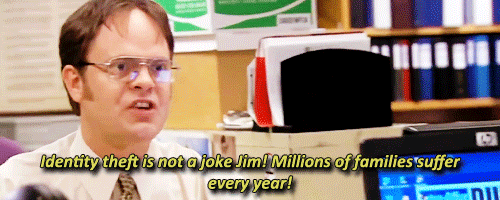What to do if you are the victim of identity theft

In 2014, over 20,000 Canadians had their identity stolen — a 20 per cent increase from just two years prior. For those who have to go through it, it’s a real headache of figuring out whether it had been stolen via phishing email, at a compromised ATM, taken by a fraudulent employee, or any other of the many scenarios that can lead to a thief having your identity.
If you find yourself in this unfortunate scenario, taking action immediately is critical. So once you stop crying and swearing profusely in your head, it’s time to get down to business. Here are ten steps to start the process of reclaiming your identity.
1. Close all your bank accounts
It’s helpful to personally go to your financial institution and tell a manager what happened so they can close your bank accounts immediately and reopen them under different account numbers. At the very least, call to report a stolen bankcard or if you have mistakenly responded to a phishing email and provided personal information.
If you are paid via direct deposit and/or receive government funds you will need to update these institutions with your new accounts, too. It’s a tedious but necessary job.
2. Cancel your credit card(s)
If your credit card is at a different financial institution than your bank account you will need to call them, too. Go over your credit card statement to ensure all charges are correct.
3. Change your passwords
Yes, all of them, not just your banking passwords. That includes Facebook, since social media websites are connected to your identity, as well as any accounts linked with your banking information, like Netflix or your Starbucks card. These days we have passwords for so many things, it’s helpful to make a list of all the websites you need to update. Having different passwords is recommended and there are apps to help you keep this organized digitally.
4. Call the credit unions
Call the two main credit unions to put a fraud warning on your account, Transunion Canada and Equifax Canada. This will (hopefully) prevent someone from impersonating you and taking out a large loan or line of credit in your name. Once the alerts are in place, you will be contacted if someone attempts to use your name to obtain funds.
5. Have your computer scanned for viruses
Whether you have a PC or Mac it’s crucial to have your computer scanned for viruses such as malware. Do not to use new debit or credit cards for online transactions until your computer it is in the clear for viruses.
6. Contact the police (if necessary)
Depending on the severity of the theft, contact the police and report the crime. If a report is filed, include the police report number in all your correspondence. Do not call 911. Contact the Crime Prevention Officer at your local Police Division via their non-emergency number.
7. Report the identity theft or fraud
The Canadian Anti-Fraud Centre (CAFC) “collects information and criminal intelligence on such matters as mass marketing fraud, advance fee fraud, Internet fraud and identification theft complaints”. If you have been the victim of identity theft report the incident with CAFC.
8. Government issued cards
Depending on the severity of your identity theft (phishing scam versus a thief stealing funds) you may need to have your government ID cards reissued. This may be the most tedious task you face when trying to recover from identity theft. All you can do is take a deep breath, and hope the lineups are short. If you need to get new IDs such as your SIN, license, or health cards start by calling 1 800 O-Canada.
9. Correct your credit report or dispute false charges
This may not apply to you, but if it does you will want to dispute any false charges as soon as possible to ensure your credit rating is not affected by something you didn’t do.
10. Sign up for alerts and monitoring
Alerts and monitoring are a great way to keep tabs on your accounts. You can have emails or text messages sent to you according to the parameters you set. You can also sign up for 2-step verification on any accounts that use this system and add an extra layer of security to accounts moving forward.
Once you’ve done everything on the list, relax: the hard part is over. Now you just need to wait for those new cards to arrive a perfect excuse to have friends treat you to a dinner out.

 Yahoo Finance
Yahoo Finance 
